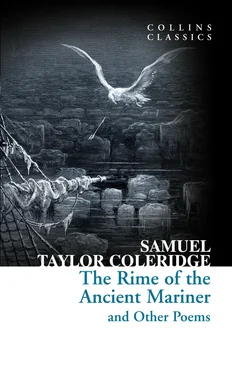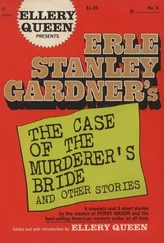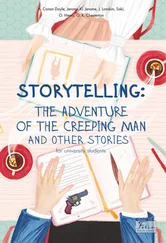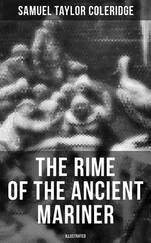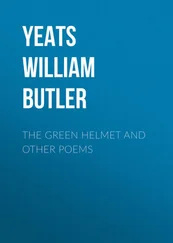THE RIME OF THE ANCIENT MARINER AND OTHER POEMS
Samuel Taylor Coleridge
William Collins
An imprint of HarperCollins Publishers
1 London Bridge Street,
London SE1 9GF
WilliamCollinsBooks.com
This eBook published in Great Britain by William Collins in 2016
Life & Times section © HarperCollins Publishers Ltd
Silvia Crompton asserts her moral rights as author of the Life & Times section
Classic Literature: Words and Phrases adapted from Collins English Dictionary
Cover by e-Digital Design
Cover illustration: I Shot the Albatross , Gustave Doré, The Rime of the Ancient Mariner , 1876 edition, duncan1890/iStock
A catalogue record for this book is available from the British Library.
All rights reserved under International and Pan-American Copyright Conventions. By payment of the required fees, you have been granted the non-exclusive, non-transferable right to access and read the text of this e-book on-screen. No part of this text may be reproduced, transmitted, down-loaded, decompiled, reverse engineered, or stored in or introduced into any information storage and retrieval system, in any form or by any means, whether electronic or mechanical, now known or hereinafter invented, without the express written permission of HarperCollins.
Source ISBN: 9780008167561
Ebook Edition © September 2016 ISBN: 9780008167578
Version: 2016-09-28
CONTENTS
Cover
Title Page
Copyright
History of William Collins
Life & Times
Part 1: The Rime of the Ancient Mariner, Christabel and Kubla Khan
The Rime of the Ancient Mariner
Christabel
Kubla Khan
Part 2: Conversation Poems
The Eolian Harp
Reflections on Having Left a Place of Retirement
This Lime-tree Bower My Prison
Frost at Midnight
Fears in Solitude
The Nightingale
Dejection: An Ode
To William Wordsworth
Part 3: Other Poems 1787–1833
Easter Holidays
Sonnet to the Autumnal Moon
To the Muse
To the Evening Star
To Disappointment
The Rose
The Hour When We Shall Meet Again
The Raven
A Christmas Carol
Inscription for a Seat by the Road Side Half-way Up a Steep Hill Facing South
Ode to Tranquillity
An Ode to the Rain
The Pains of Sleep
Farewell to Love
The Visionary Hope
God’s Omnipresence: A Hymn
To Nature
Youth and Age
Work without Hope
Duty Surviving Self-Love
Epitaph
Classic Literature: Words and Phrases
About the Publisher
History of William Collins
In 1819, millworker William Collins from Glasgow, Scotland, set up a company for printing and publishing pamphlets, sermons, hymn books and prayer books. That company was Collins and was to mark the birth of HarperCollins Publishers as we know it today. The long tradition of Collins dictionary publishing can be traced back to the first dictionary William published in 1824, Greek and English Lexicon . Indeed, from 1840 onwards, he began to produce illustrated dictionaries and even obtained a licence to print and publish the Bible.
Soon after, William published the first Collins novel, Ready Reckoner ; however, it was the time of the Long Depression, where harvests were poor, prices were high, potato crops had failed and violence was erupting in Europe. As a result, many factories across the country were forced to close down and William chose to retire in 1846, partly due to the hardships he was facing.
Aged 30, William’s son, William II, took over the business. A keen humanitarian with a warm heart and a generous spirit, William II was truly ‘Victorian’ in his outlook. He introduced new, up-to-date steam presses and published affordable editions of Shakespeare’s works and The Pilgrim’s Progress , making them available to the masses for the first time. A new demand for educational books meant that success came with the publication of travel books, scientific books, encyclopedias and dictionaries. This demand to be educated led to the later publication of atlases, and Collins also held the monopoly on scripture writing at the time.
In the 1860s Collins began to expand and diversify and the idea of ‘books for the millions’ was developed. Affordable editions of classical literature were published, and in 1903 Collins introduced 10 titles in their Collins Handy Illustrated Pocket Novels. These proved so popular that a few years later this had increased to an output of 50 volumes, selling nearly half a million in their year of publication. In the same year, The Everyman’s Library was also instituted, with the idea of publishing an affordable library of the most important classical works, biographies, religious and philosophical treatments, plays, poems, travel and adventure. This series eclipsed all competition at the time, and the introduction of paperback books in the 1950s helped to open that market and marked a high point in the industry.
HarperCollins is and has always been a champion of the classics, and the current Collins Classics series follows in this tradition – publishing classical literature that is affordable and available to all. Beautifully packaged, highly collectible and intended to be reread and enjoyed at every opportunity.
Life & Times
About the Author
Samuel Taylor Coleridge was an English poet, philosopher and critic. A great friend of William Wordsworth, he was a founder of the Romantic movement in English literature, and is regarded as one of the most important poets of the period. He died at the age of 61, having battled lifelong ill health and an opium addiction.
Coleridge was born in 1772 in Devon, the youngest of thirteen children of the Reverend John Coleridge, a vicar and headmaster. The reverend died when Samuel was just eight, and he was dispatched to London to attend Christ’s Hospital. There, under the tutelage of a stern but inspirational schoolmaster, he was introduced to the Greek and Roman poets as well as Shakespeare and Milton.
Musing on his school days in 1817’s Biographia Literaria; or Biographical Sketches of My Literary Life and Opinions , Coleridge recalls how the Reverend James Bowyer drilled into him that ‘poetry, even that of the loftiest and, seemingly, that of the wildest odes, had a logic of its own, as severe as that of science; and more difficult, because more subtle, more complex’. Bowyer’s approach to poetic composition was no-nonsense in the extreme, but it instilled in Coleridge a sensitivity to syntax and imagery, and sent him off to Cambridge University full of ‘good gifts’. He proved a more enthusiastic poet than student, however, accumulating large debts and a collection of juvenile poems but never completing his degree.
Coleridge’s education did at least serve to throw him into the company of young men who would later form his literary circle. At Christ’s Hospital he befriended Charles Lamb, and as a student he met Robert Southey, a fellow poet and idealist with whom he hatched a plan to found a commune in the wilds of America, where learning and liberty would reign supreme. In 1795 the two young men married sisters Edith and Sarah Fricker – Southey happily, Coleridge very unhappily – and plans for the commune eventually faded.
But these disappointments were soon eclipsed: that same year, Coleridge made the acquaintance of William Wordsworth, and they embarked on a poetic and philosophical collaboration that would define not only both of their careers but also the artistic legacy of their era.
Читать дальше
